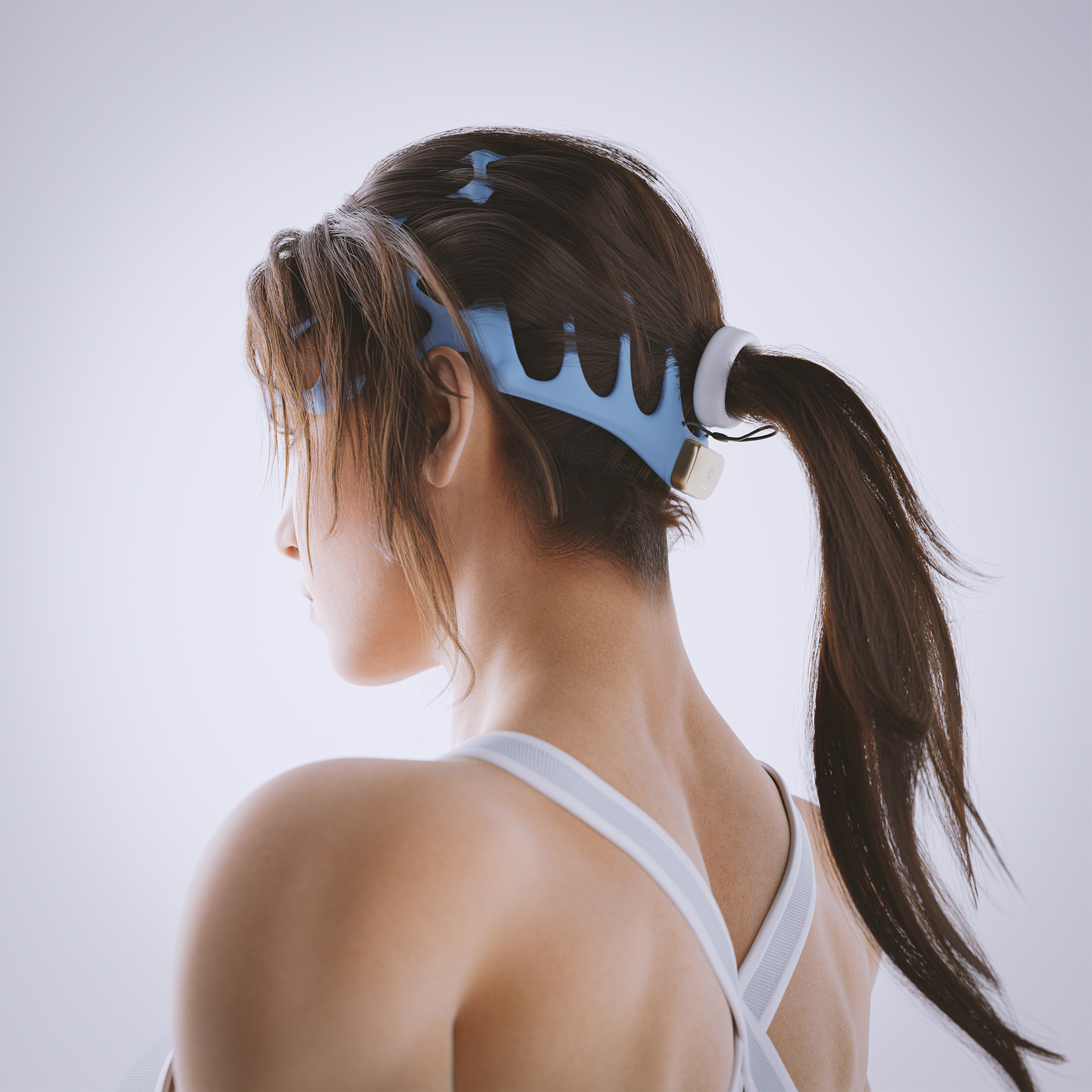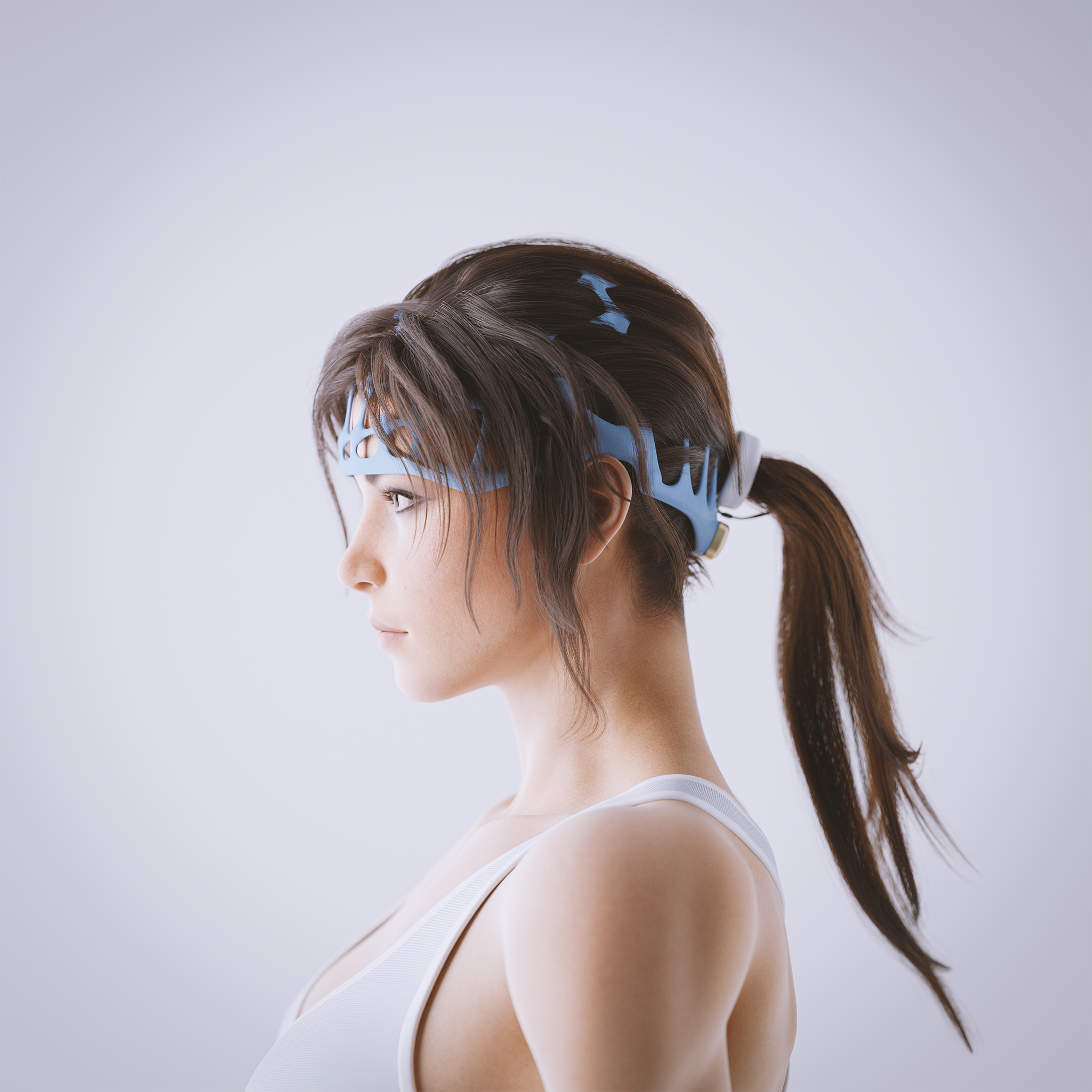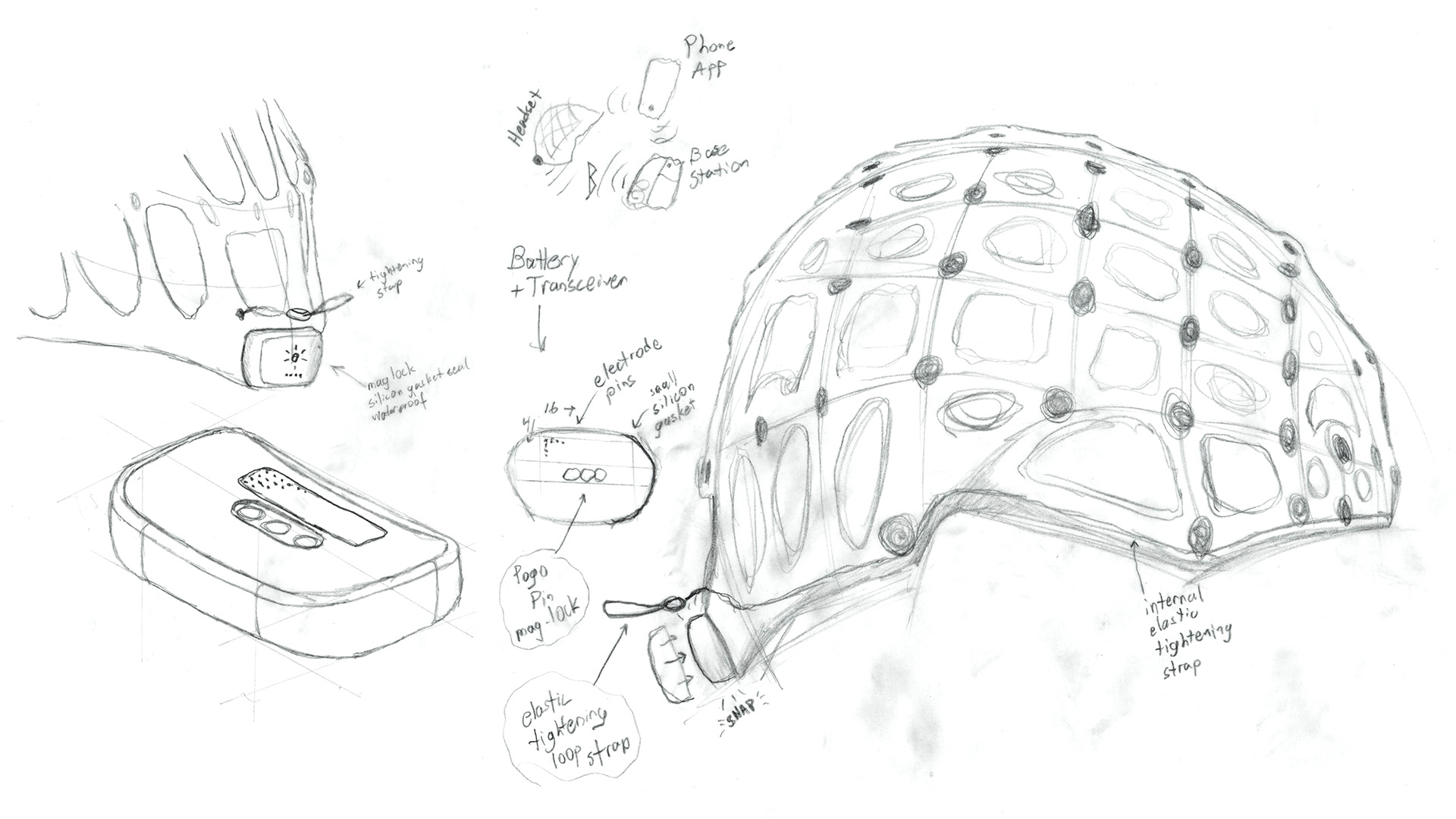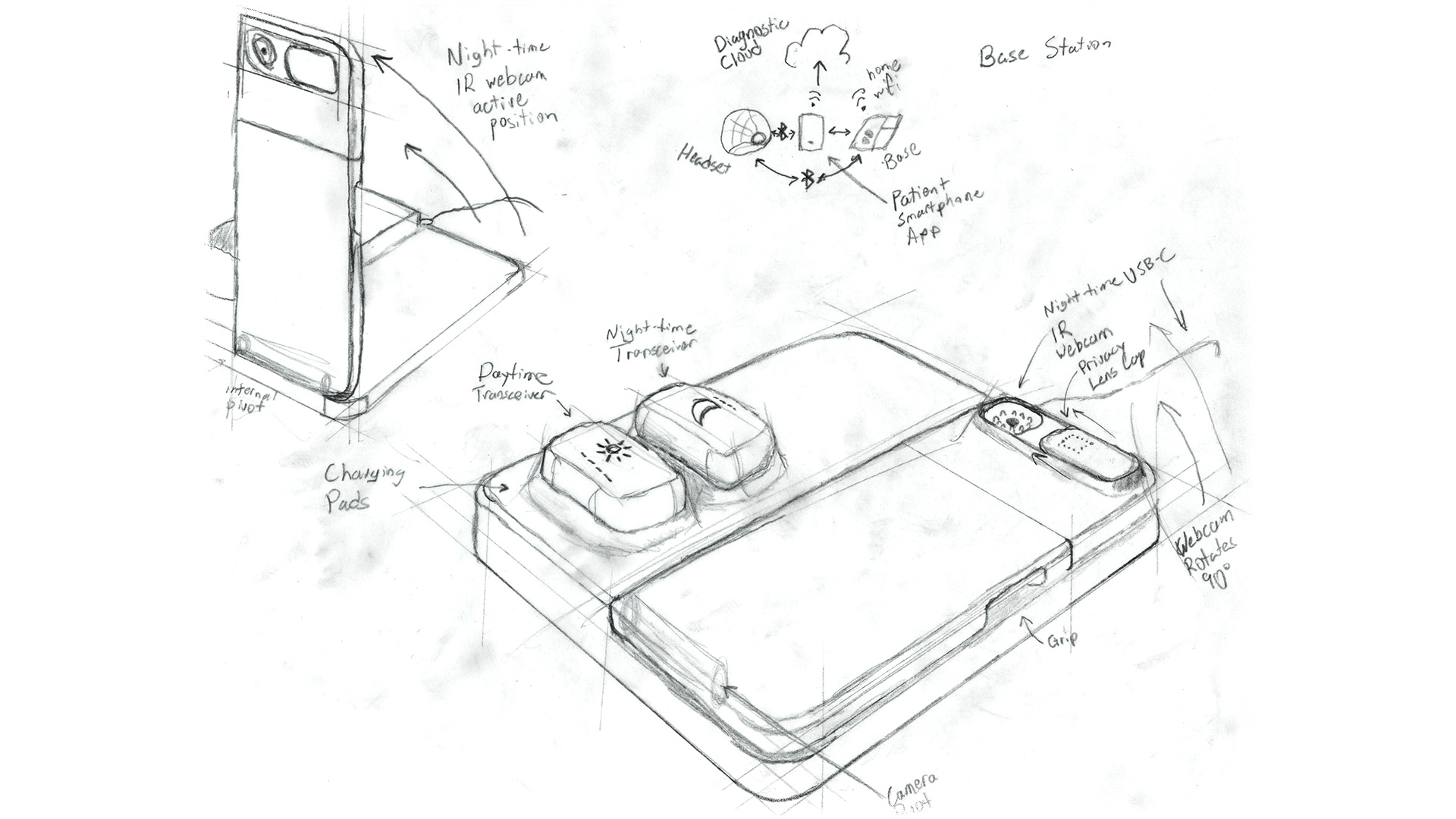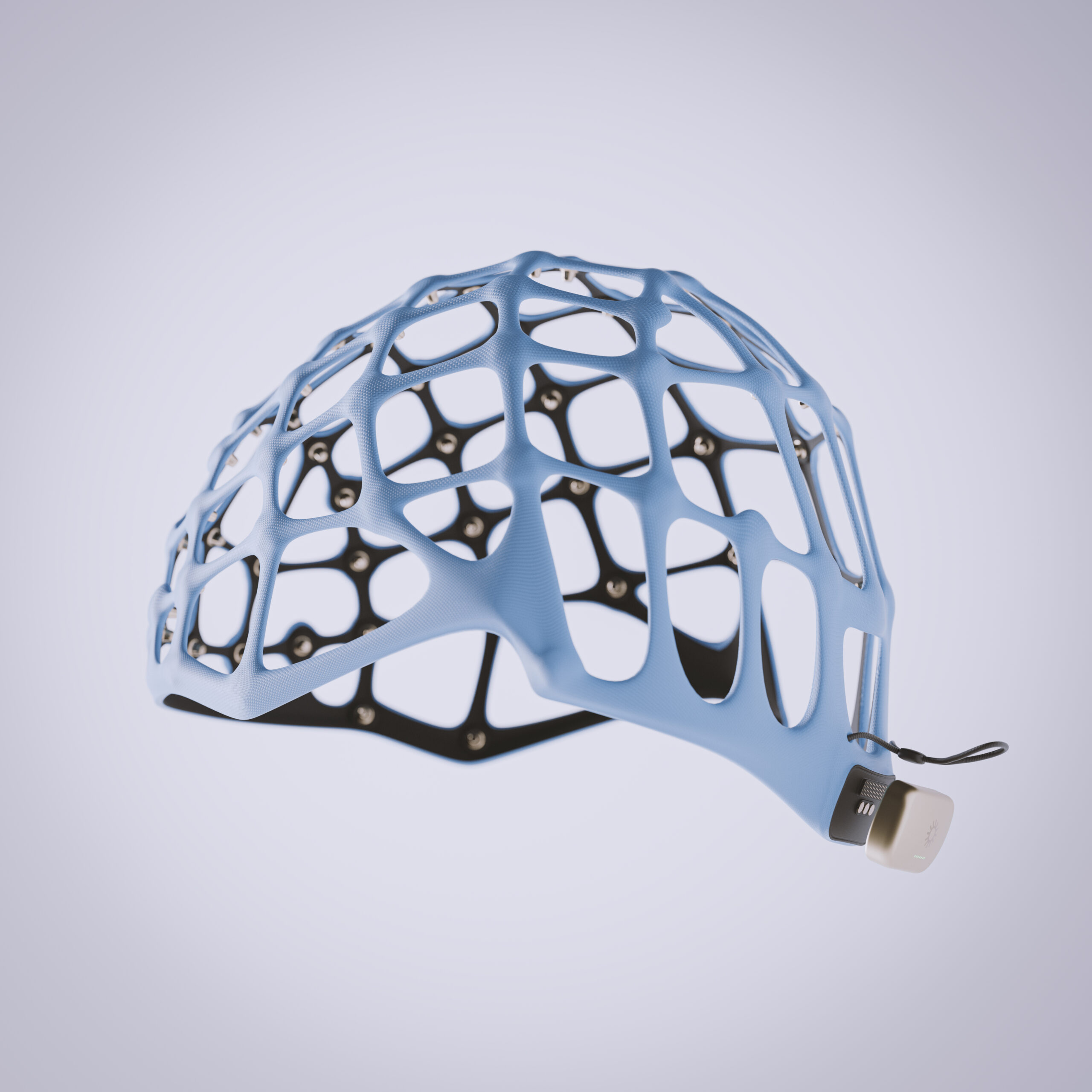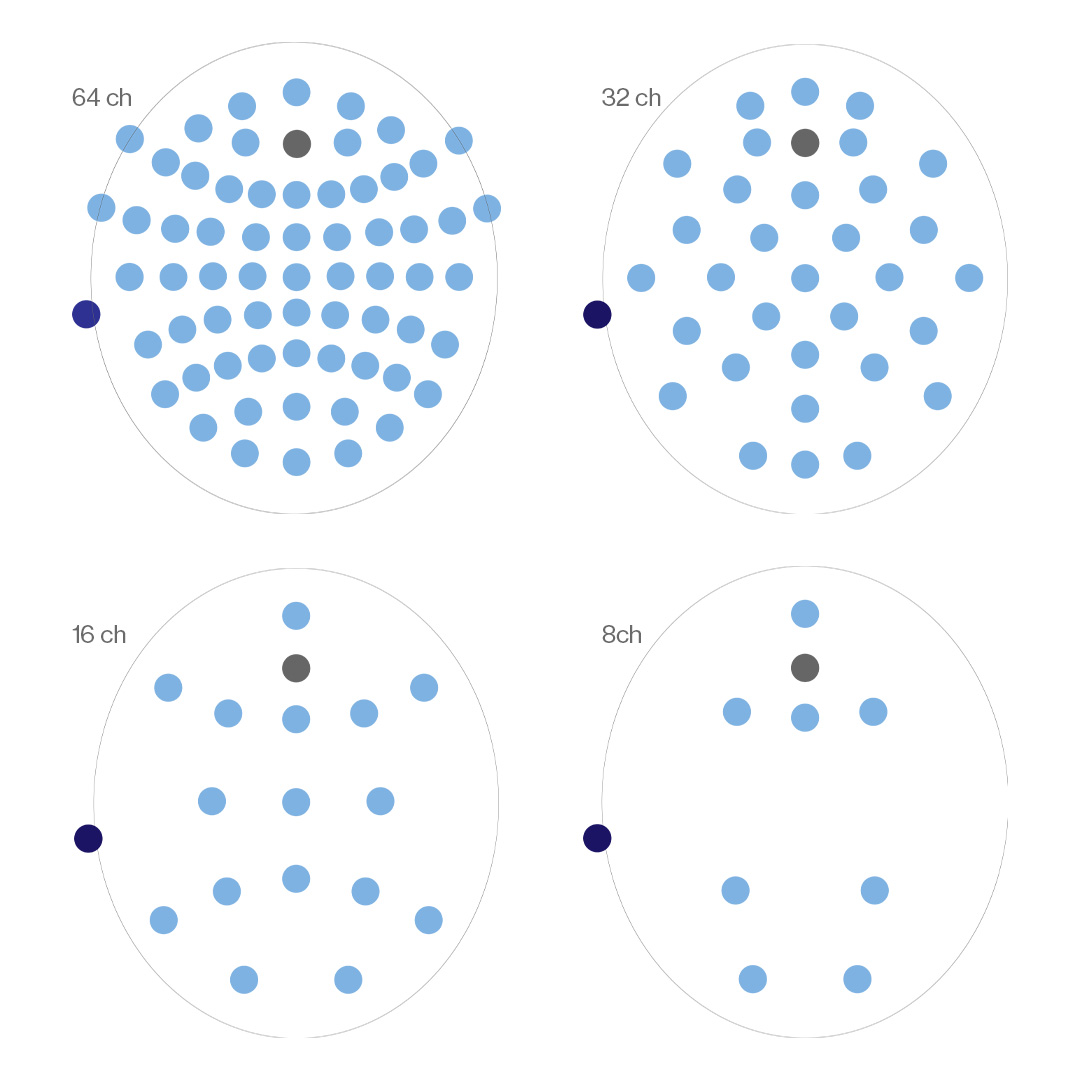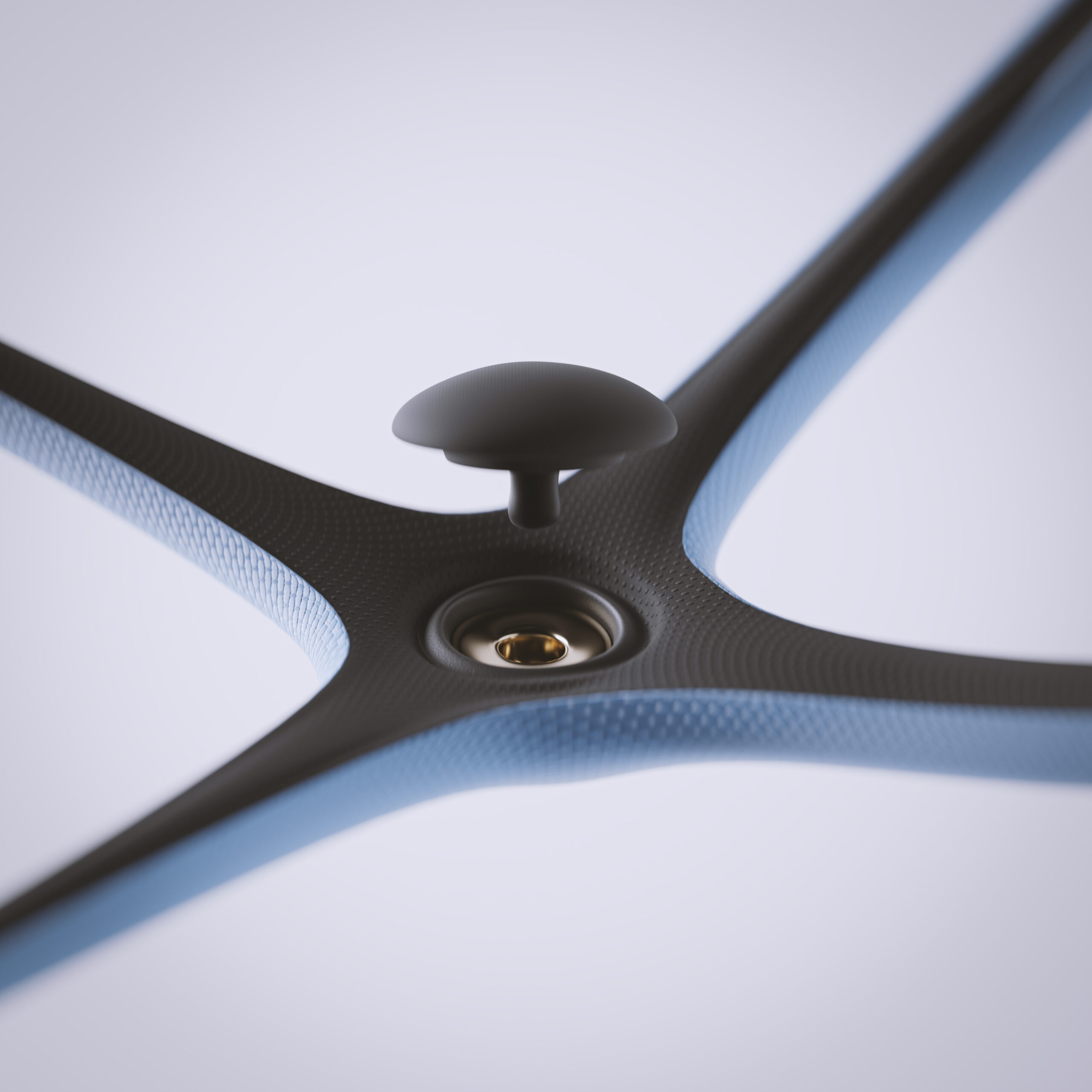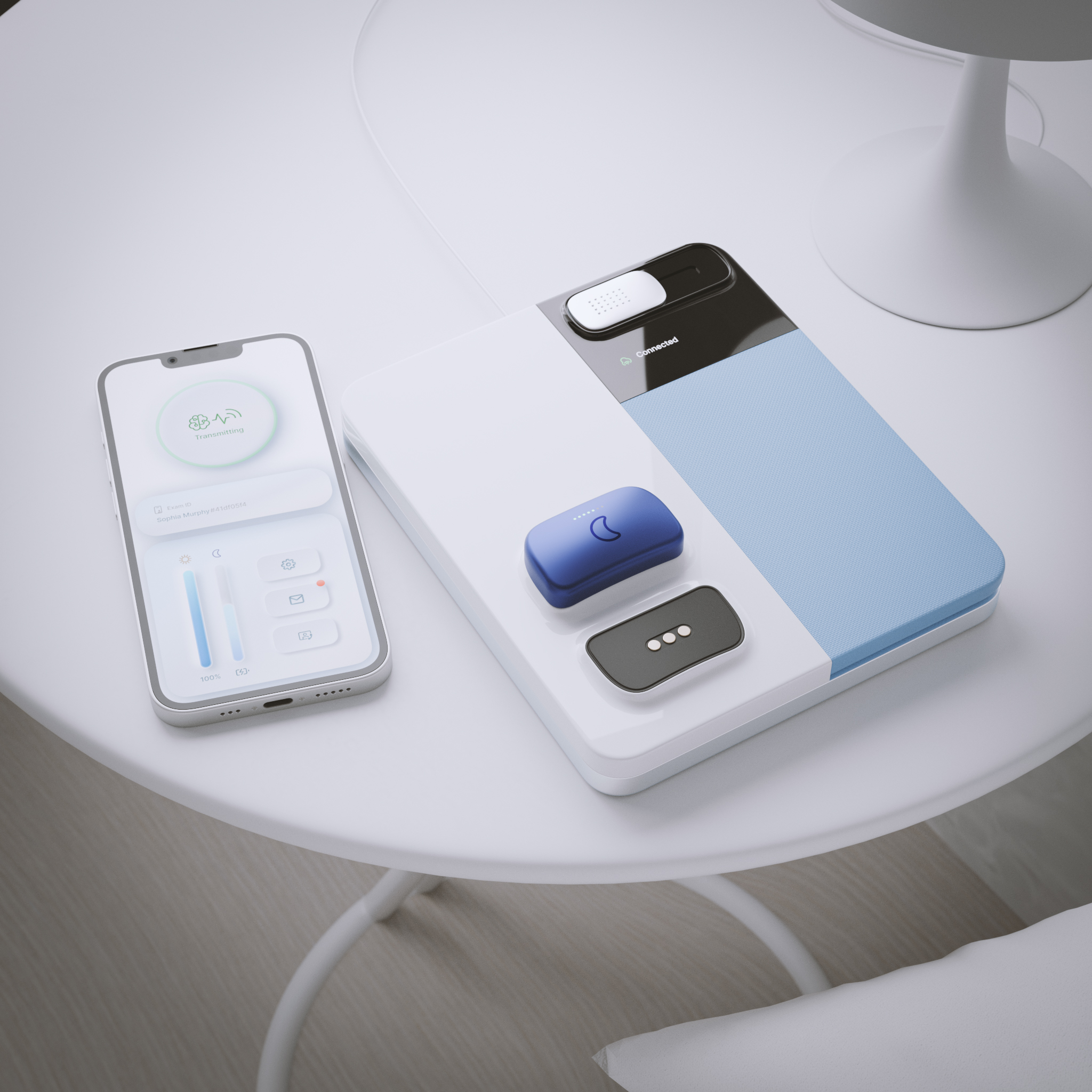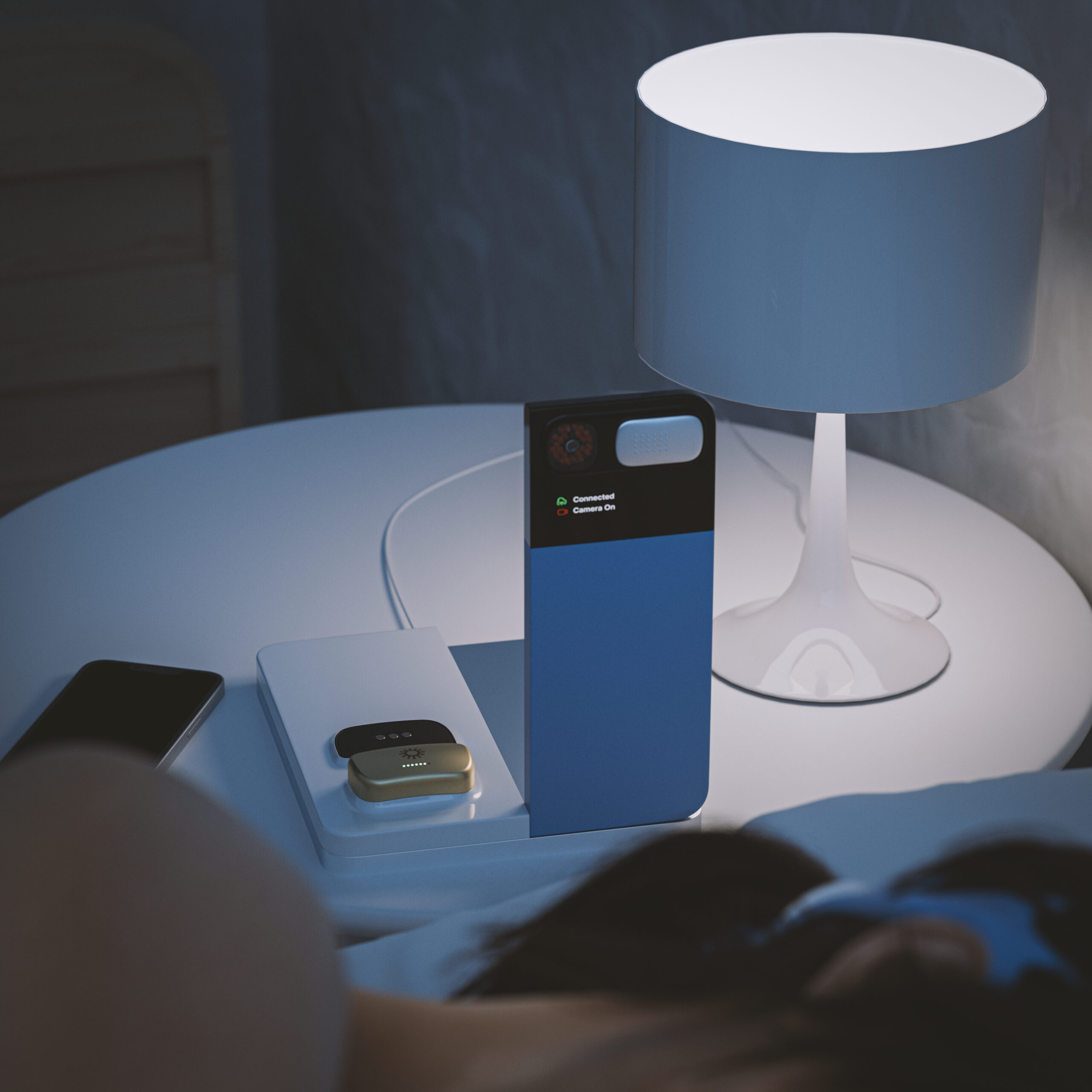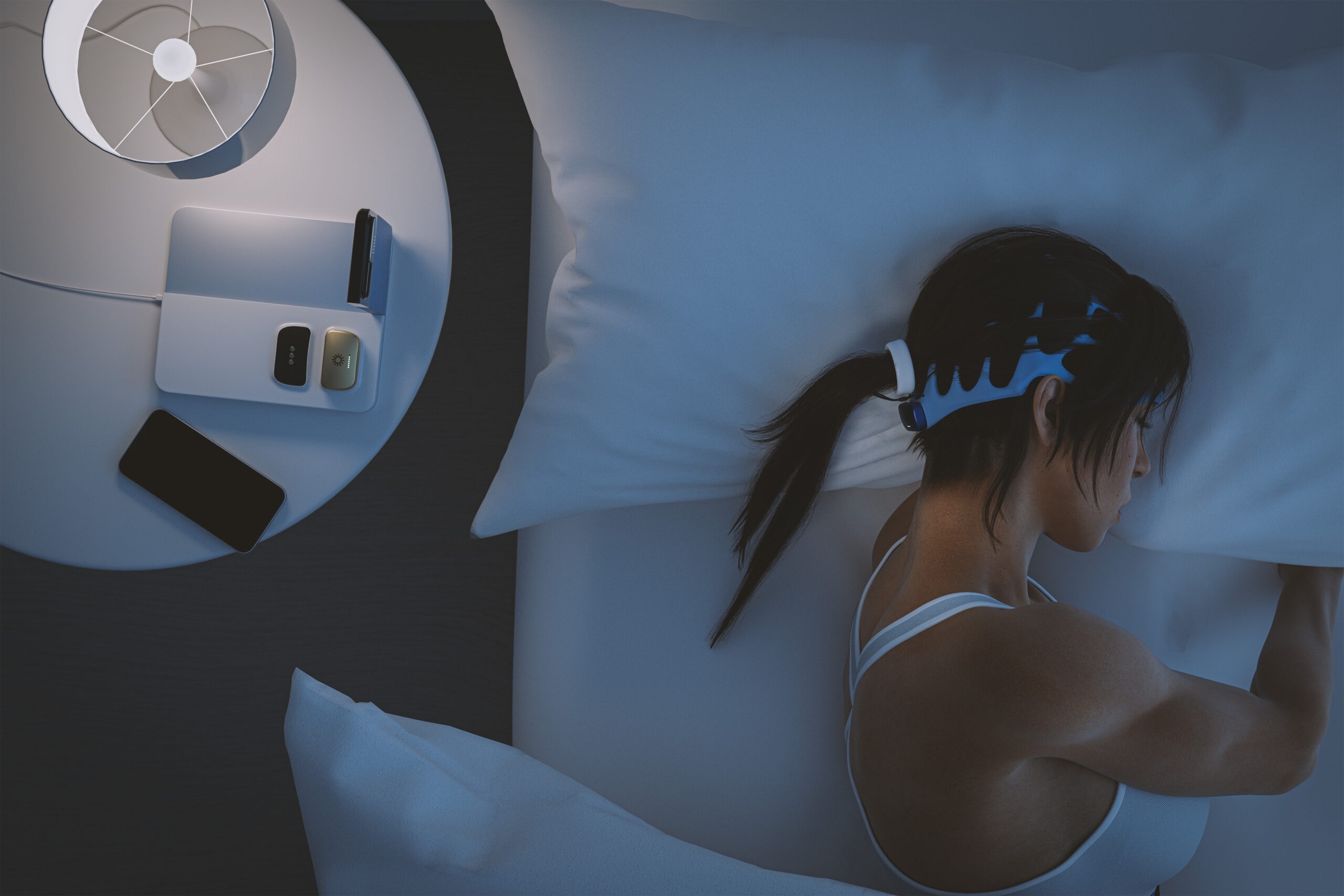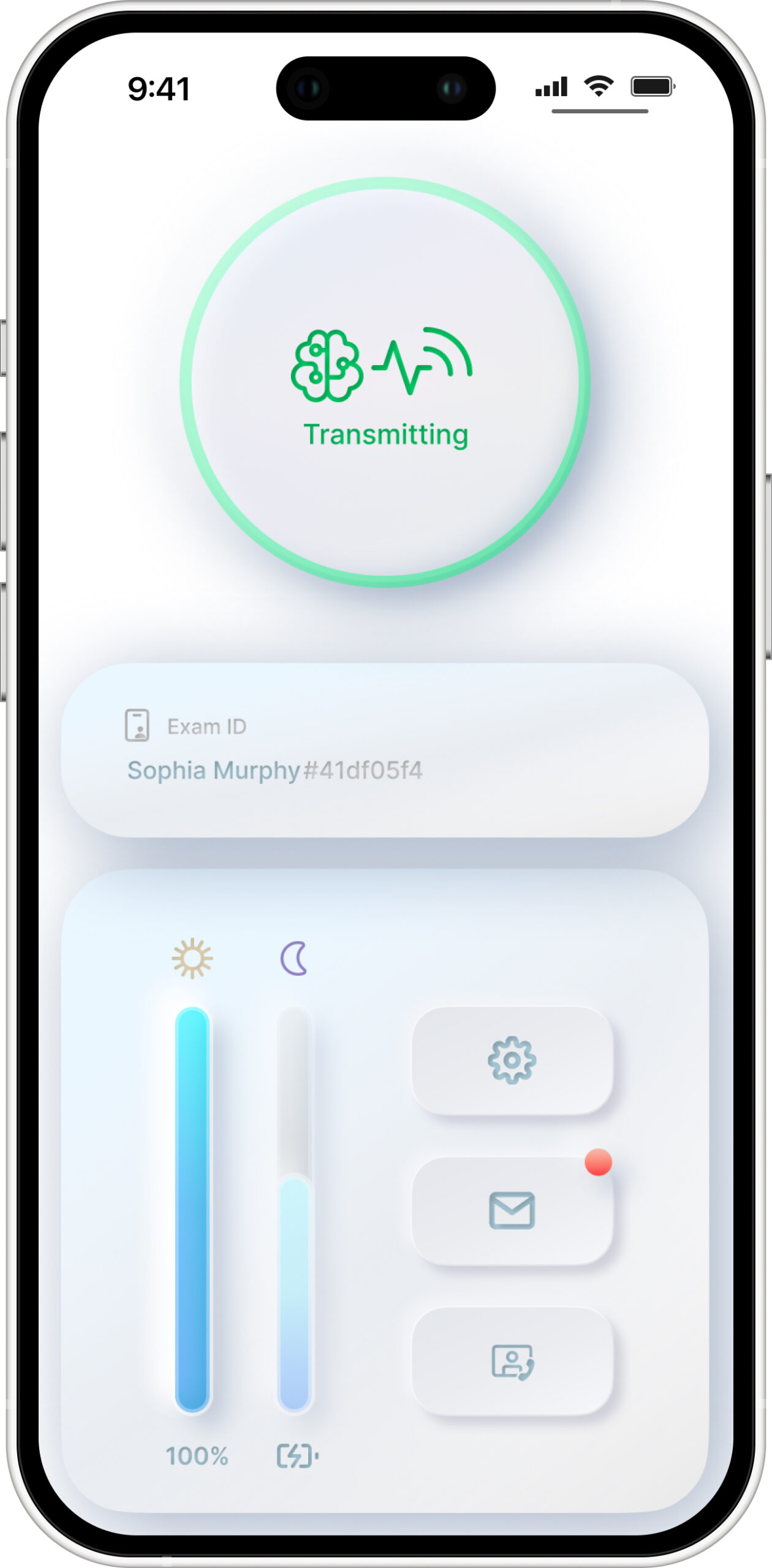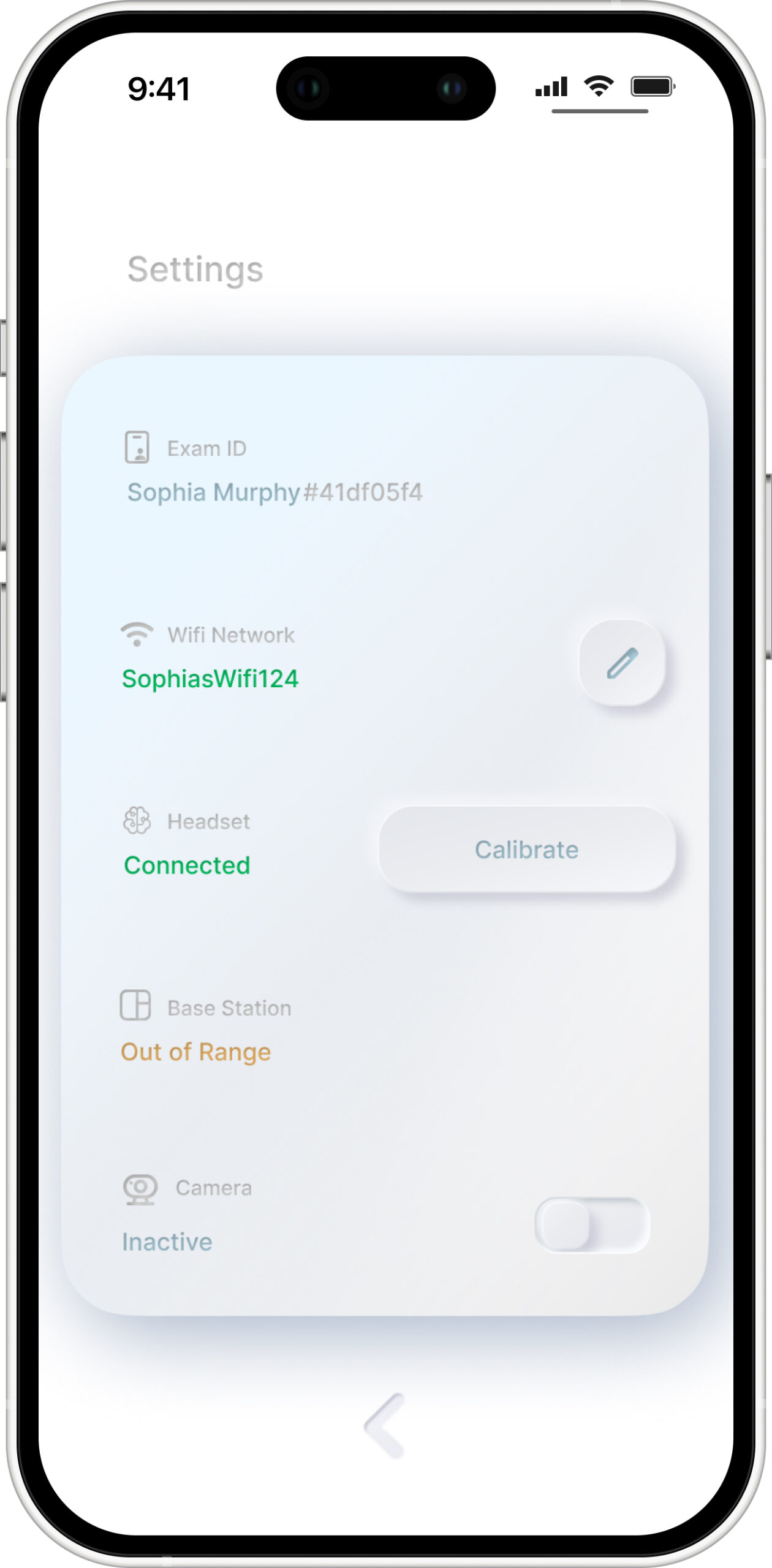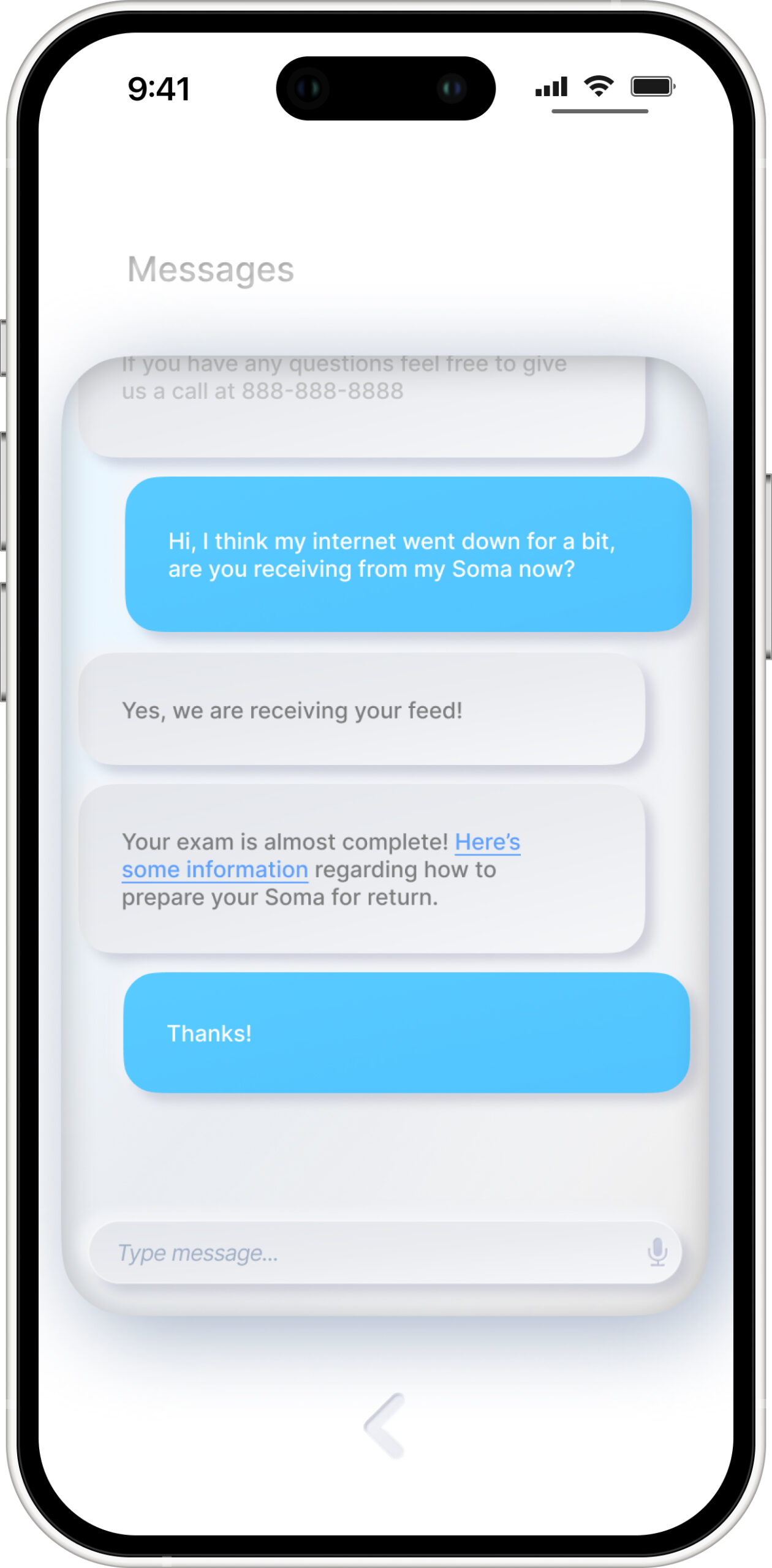Soma Ambulatory EEG System
Product & UX Concept
Healthcare Design
Overview
At-home ambulatory electroencephalography provides neurology care providers with an outpatient solution for longer-term monitoring of spontaneous electrical brain activity. They are critical for diagnosing epilepsy, along with other neurological disorders such as tumors, stroke, sleep disorders, and encephalitis, and also serve as crucial tools in neurological research.
The portable technology solutions for ambulatory EEGs have not advanced much in the past decades, and are notoriously cumbersome and uncomfortable for the patient, who must often wear equipment for days on end. Disposable electrode apparatus taped and wrapped into the scalp, usually with free-dangling wire bundles, are connected to large, bulky monitoring units that can weigh up to several kilos, and must be worn on the patient with various bandelier-type harnesses and straps.
These solutions, while allowing the patient some freedom of movement, make everyday activities difficult, such as exercise, outdoor movement, bathing, and sleeping. Children especially are burdened by the weight and size of the "portable" equipment.
A solution that takes advantage of new lightweight medical-grade materials, along with densification and hardening of electronic equipment, as well as modern wireless technology, would allow reliable and secure EEG data acquisition while minimizing the physical and mental impact on the patient who wears the EEG equipment.
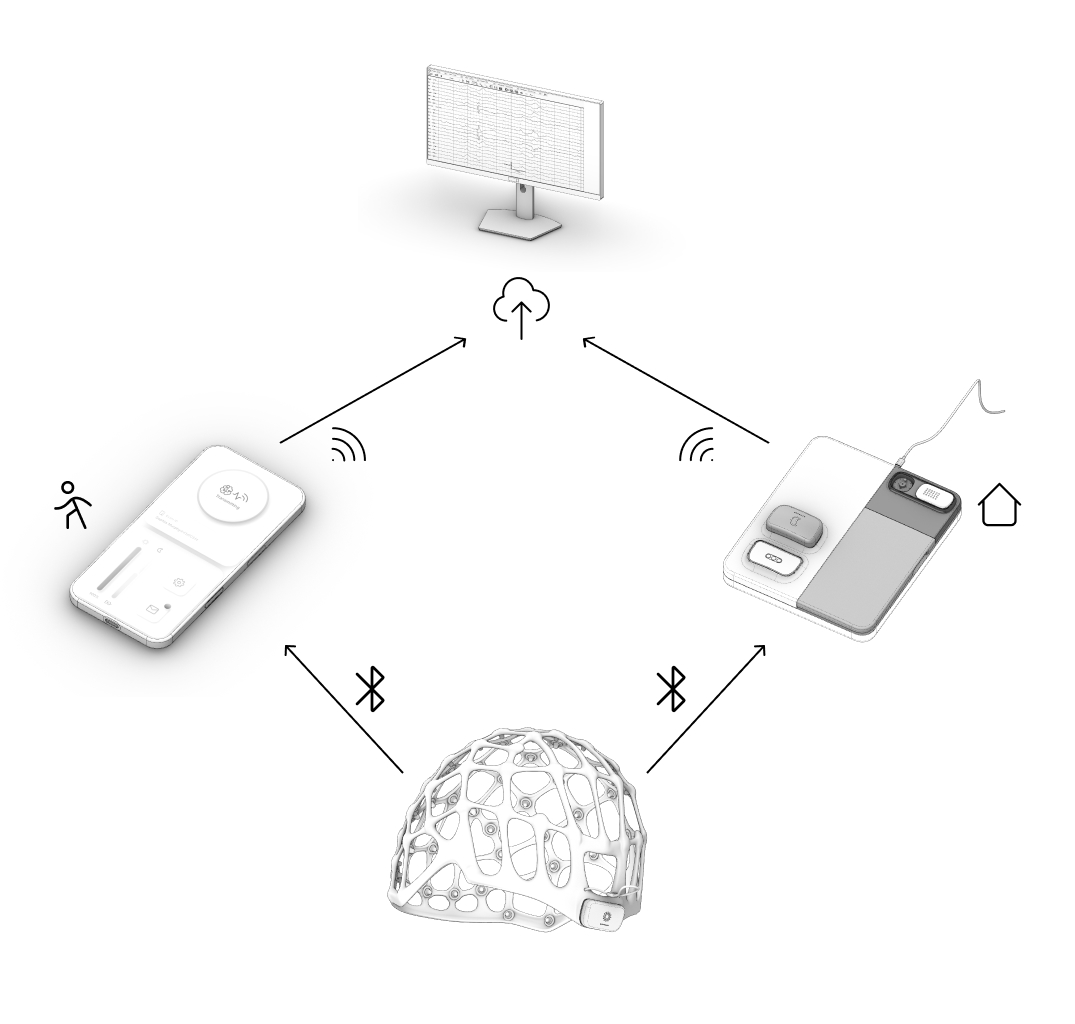
System Description
Soma is a triad solution of (1) headset, (2) home base station, and (3) mobile application. These three products communicate with each other via a combination of home Wifi and Bluetooth, and stream patient EEG data to their diagnostic care team over either home internet or cellular connection. The solution is designed to allow a patient to set up the system like they would any home IoT device or product, and not require technician intervention unless needed. The three components each have onboard memory buffers for loss of connection, so data can be constantly recorded in case of internet connection loss.
The net consists of snap-in electrode receptacles which can be plugged with non-functional, flat caps when that node is not being used for the study.
Attached at the back of the net is a transceiver unit that captures signal data and sends it back via Bluetooth to either the home base station or through the mobile app.
Connection loss causes the transceiver to record data to a buffer of onboard memory, and returns transmission once connection is reacquired. The patient is provided with two transceivers, one for daytime usage, and one for nighttime usage. The respective transceivers are charged on the base station when not in use.
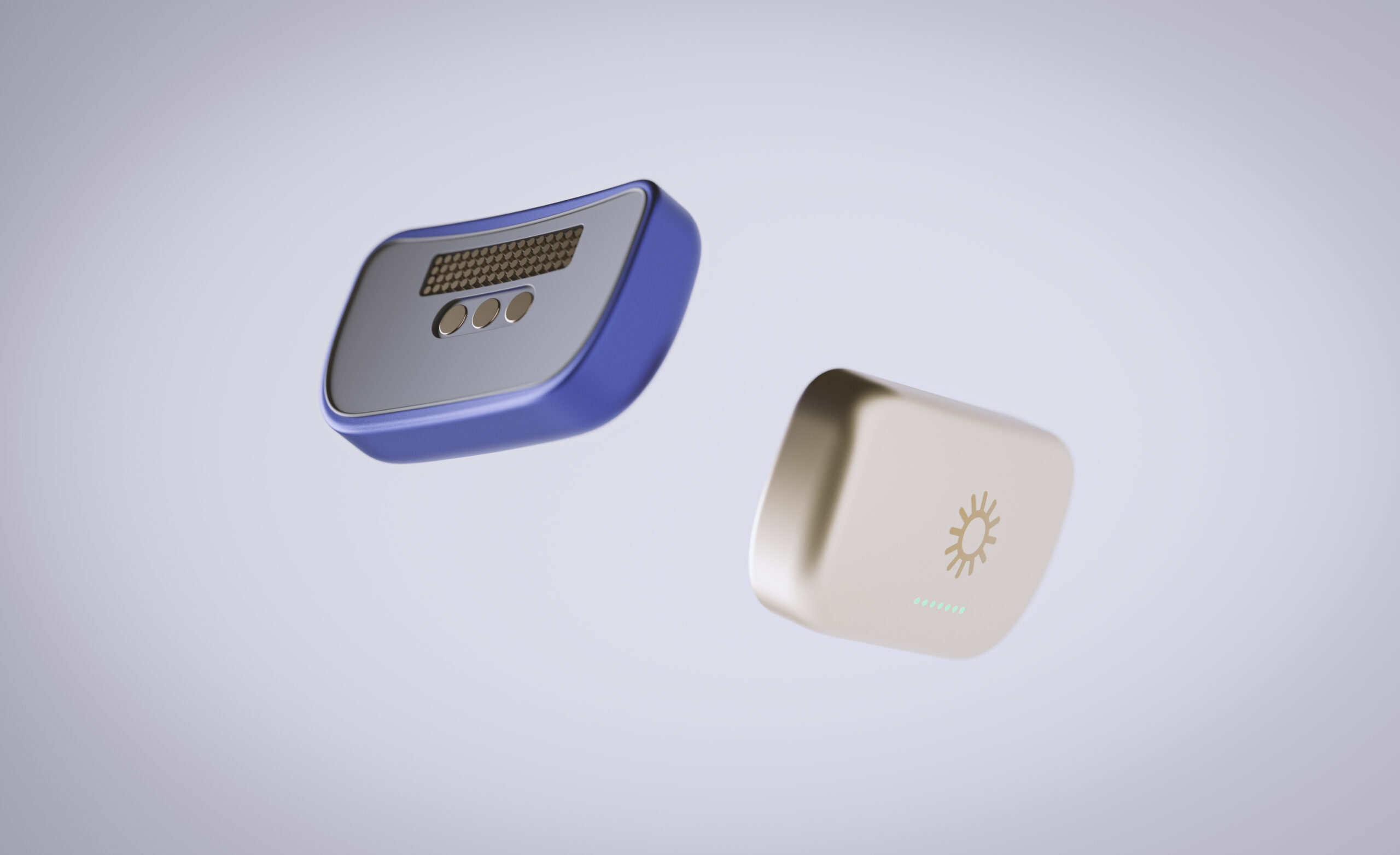
Mobile App
Patient operation is simplified on a low-complexity mobile application where they interface with the equipment and communicate with their care team. The app provides the patient with transceiver battery life, transmission status, and means to message and video-call with their diagnostic team.
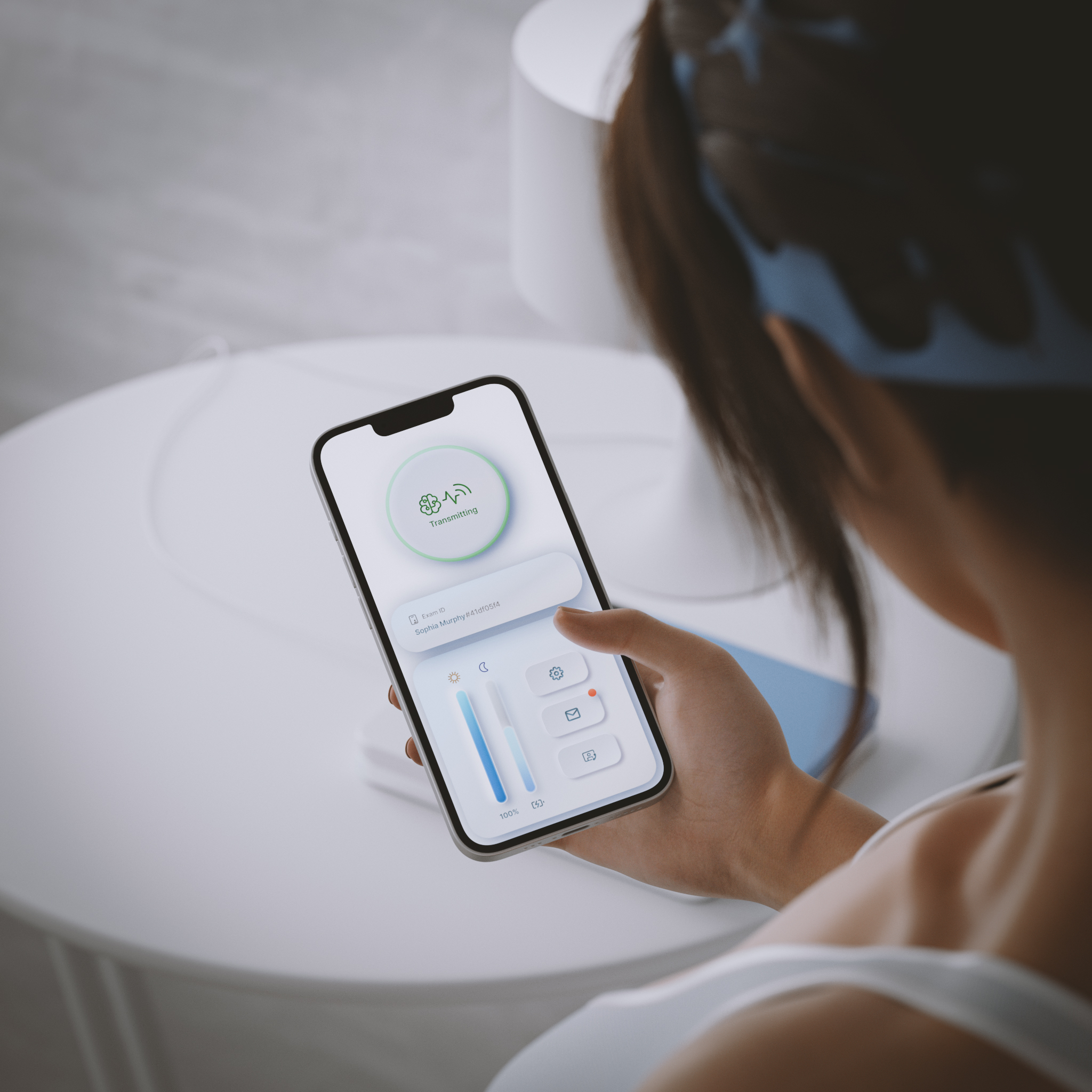
Application Wireframe
Open Feasability Questions
Questions to be addressed through further prototyping and testing:
- Materials for headset to optimize durability and adjustability: What is a good material for adjustable elasticity that maintains maximum electrode contact on the scalp? Should there be headsets of varying diameter for different sized heads, or can a universal fit headset be accomplished?
- Waterproofing: Can water resistance of materials and components allow patient bathing comfort without impeding signal acquisition or causing interference?
- Mag-lock connectors: Do mag-lock pogo pin connections create a strong enough field that could cause signal interference?
- Mobile application onboarding and headset calibration: Is there a way for patients to set up their ambulatory EEG without technician intervention? Can a calibration walkthrough on a mobile app suitably inform the patient of how best to apply and adjust their electrode array?
Tools Used

Plasticity, Blender, Rhino, Substance Suite, Adobe Creative Suite, Figma. No AI was used in this project.
(c) 2025 Joseph Donovan Design
